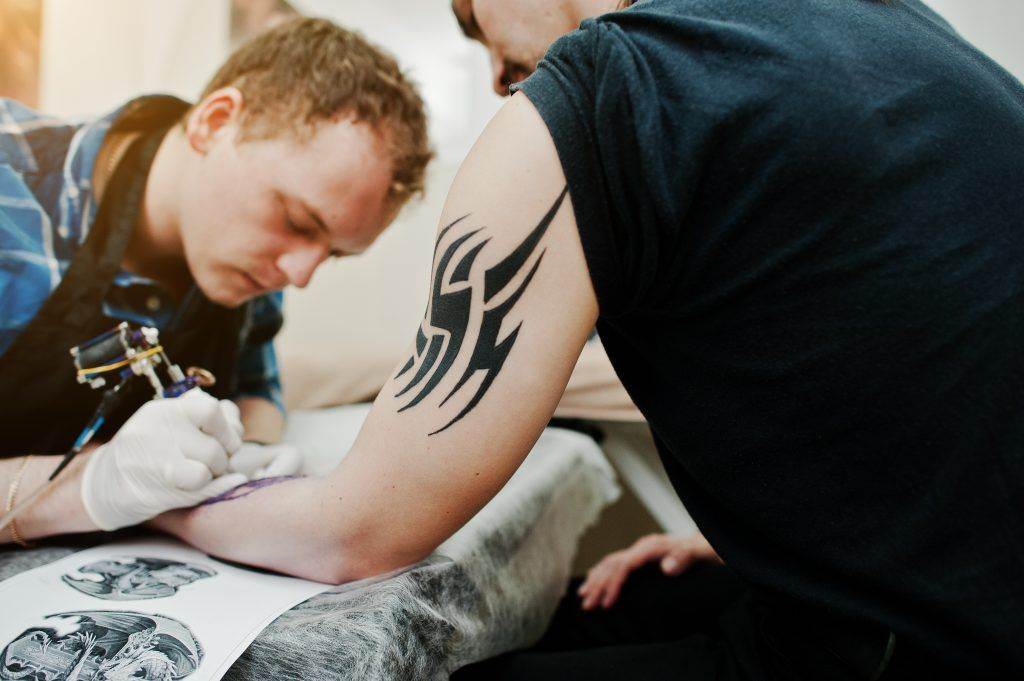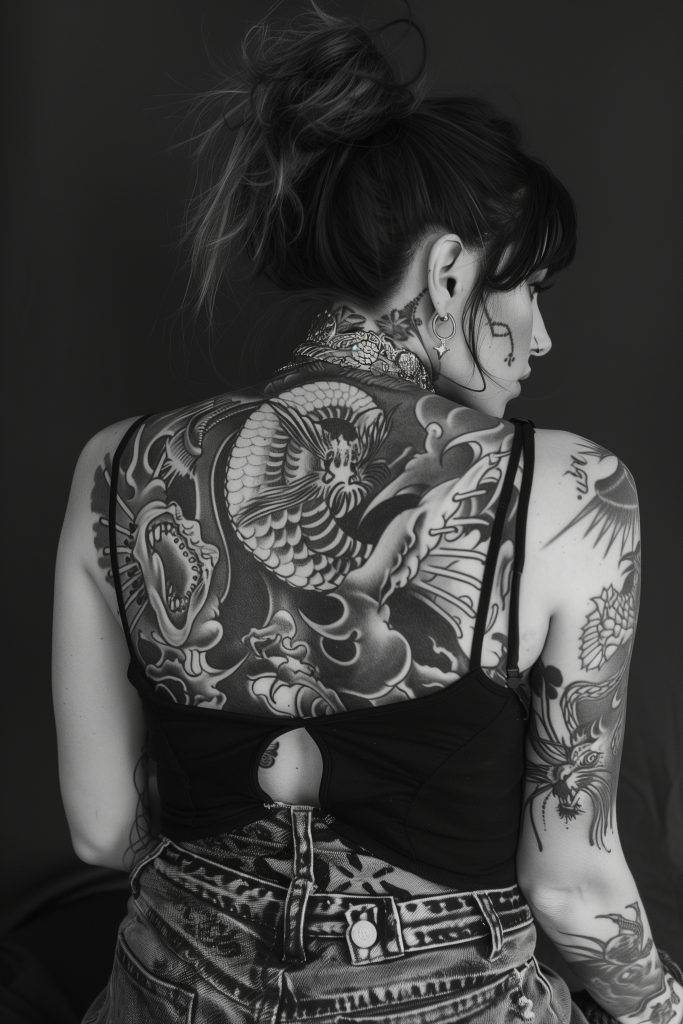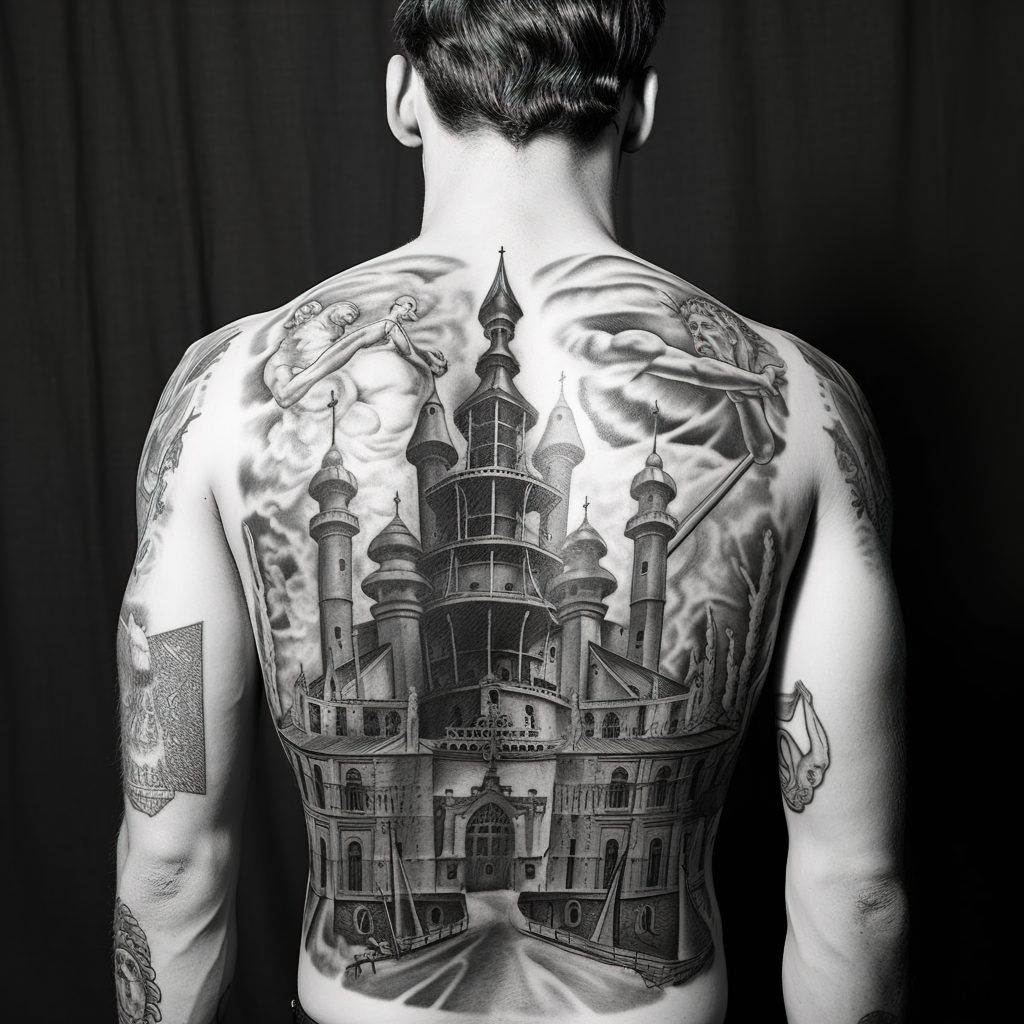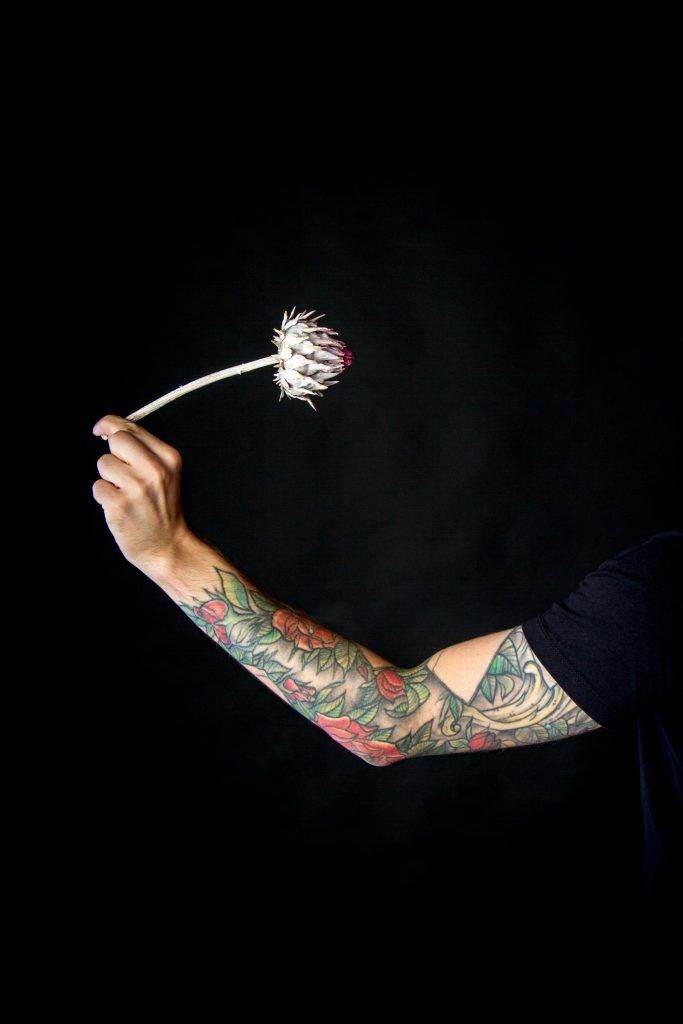Tattooing has been a part of human culture for thousands of years, with evidence of tattooed bodies dating back to ancient civilizations such as the Egyptians, Greeks, and Romans. The art of tattooing has evolved over time, with different techniques and tools being used to create intricate designs on the skin. One of the oldest and most traditional methods of tattooing is hand-poked tattooing, also known as stick-and-poke tattooing. This technique involves using a needle attached to a stick to manually puncture the skin and deposit ink. On the other hand, machine tattooing, also known as electric tattooing, was developed in the late 19th century and involves using a machine to rapidly puncture the skin and deposit ink. Both hand-poked and machine tattooing have their own unique histories and cultural significance, and understanding the origins of these techniques is essential in appreciating the art of tattooing as a whole.
Hand-poked tattooing has been practiced by various indigenous cultures around the world for centuries, with each culture having its own unique methods and designs. In many traditional societies, tattoos are used as a form of cultural expression, with each design holding deep spiritual and symbolic meaning. For example, in Polynesian cultures, tattoos are used to signify social status, rank, and personal achievements, while in Japanese culture, tattoos are often associated with the yakuza and are used to symbolize loyalty and strength. Hand-poked tattooing has been an integral part of these cultural traditions, with techniques being passed down through generations and designs being adapted to reflect the beliefs and values of each society. On the other hand, machine tattooing has its roots in the industrial revolution, with the invention of the electric tattoo machine revolutionizing the way tattoos were created. This new technique allowed for faster and more precise tattooing, leading to a surge in popularity in Western societies. As a result, machine tattooing became associated with rebellion and counterculture, with tattoos being used as a form of self-expression and individuality.
Key Takeaways
- Hand-poked tattooing is a traditional technique that involves using a needle attached to a stick to manually create the design, while machine tattooing uses an electric tattoo machine to rapidly puncture the skin.
- The history of tattooing dates back thousands of years and has been practiced in various cultures around the world, with hand-poked techniques being a common method in many indigenous communities.
- Traditional hand-poked tattooing holds cultural significance in many societies, often representing rites of passage, spiritual beliefs, or tribal affiliations.
- Modern machine tattooing offers advantages such as speed, precision, and the ability to create intricate designs, leading to its widespread popularity in the mainstream tattoo industry.
- When comparing hand-poked and machine tattooing, factors to consider include the aesthetics of the final result, the healing process, and personal preferences for the experience of getting a tattoo.
Traditional Hand-Poked Tattooing: Techniques and Cultural Significance
Hand-poked tattooing is a meticulous and time-consuming process that requires a high level of skill and precision. The technique involves using a single needle attached to a stick or handle to manually puncture the skin and deposit ink. The artist must carefully control the depth and angle of each puncture to ensure that the ink is evenly distributed and that the design is clear and defined. This method allows for greater control over the tattooing process, resulting in highly detailed and intricate designs. Hand-poked tattoos are often characterized by their fine lines and delicate shading, giving them a unique and organic appearance. In many traditional societies, hand-poked tattoos are created using natural materials such as bone or wood for the needle and soot or plant-based pigments for the ink. These materials are often considered sacred and are believed to imbue the tattoo with spiritual significance.
In addition to its technical complexity, hand-poked tattooing holds deep cultural significance for many indigenous societies. In these cultures, tattoos are often used to mark important life events such as coming-of-age ceremonies, marriage, or mourning rituals. Each design holds specific meanings and symbolism that reflect the individual’s identity, social status, and spiritual beliefs. For example, in Maori culture, facial tattoos known as moko are used to signify a person’s genealogy, social standing, and personal achievements. The process of receiving a hand-poked tattoo is often accompanied by rituals and ceremonies that are meant to honor the individual’s connection to their ancestors and community. As a result, hand-poked tattoos are not just decorative; they are deeply intertwined with the cultural identity and traditions of the people who wear them.
Modern Machine Tattooing: Advantages and Evolution of the Technique
Machine tattooing, also known as electric tattooing, has become the dominant technique in contemporary tattoo culture due to its speed, efficiency, and versatility. The electric tattoo machine was first patented in 1891 by Samuel O’Reilly, revolutionizing the way tattoos were created. This new method allowed for rapid puncturing of the skin and precise ink deposition, resulting in cleaner lines and bolder colors. The electric tattoo machine quickly gained popularity among Western societies, leading to a surge in demand for tattoos as a form of self-expression and individuality. Today, machine tattooing has evolved to include various types of machines such as coil machines, rotary machines, and pneumatic machines, each with its own unique features and advantages.
One of the main advantages of machine tattooing is its speed and efficiency. The electric tattoo machine can puncture the skin at a much faster rate than hand-poked techniques, allowing for larger and more complex designs to be completed in a shorter amount of time. This has made machine tattooing more accessible to a wider audience, with many people opting for larger tattoos that would be impractical to create using hand-poked methods. In addition, machine tattooing allows for greater precision and consistency in line work and shading, resulting in tattoos that have a more polished and professional appearance. The use of modern equipment such as disposable needles and autoclaved tubes has also made machine tattooing safer and more hygienic than ever before.
Comparing Hand-Poked and Machine Tattooing: Aesthetics and Healing Process
When comparing hand-poked and machine tattooing, it is important to consider the aesthetic qualities of each technique as well as the healing process for the client. Hand-poked tattoos are known for their fine lines and delicate shading, giving them a unique and organic appearance that is difficult to replicate using machine techniques. The manual nature of hand-poked tattooing allows for greater control over the depth and angle of each puncture, resulting in highly detailed and intricate designs that have a more natural and handmade feel. In contrast, machine tattoos are characterized by their bold lines and vibrant colors, making them well-suited for larger and more complex designs. The precision and speed of machine tattooing allow for cleaner lines and more consistent shading, resulting in tattoos that have a more polished and professional appearance.
In terms of the healing process, hand-poked tattoos tend to have a shorter recovery time compared to machine tattoos due to the shallower punctures made in the skin. Hand-poked tattoos typically heal within 1-2 weeks, with minimal scabbing or peeling. On the other hand, machine tattoos may take longer to heal due to the deeper punctures made by the electric needle. This can result in more scabbing and peeling during the healing process, which may require additional care and attention from the client. However, it is important to note that individual healing times can vary depending on factors such as skin type, placement of the tattoo, and aftercare practices.
The Role of Technology in Tattooing: Impact on Hand-Poked and Machine Techniques
Advancements in technology have had a significant impact on both hand-poked and machine tattooing techniques, leading to new innovations that have transformed the art of tattooing as a whole. In recent years, there has been a resurgence of interest in traditional hand-poked tattooing techniques, with many artists incorporating modern tools and materials to create unique designs that blend traditional craftsmanship with contemporary aesthetics. For example, some artists use rotary machines with adjustable needle depths to mimic the precision and control of hand-poked techniques while still benefiting from the speed and efficiency of machine tattooing. This fusion of old and new has resulted in a diverse range of styles that cater to different client preferences while honoring the cultural significance of traditional hand-poked tattooing.
On the other hand, advancements in machine tattooing technology have led to new possibilities for creating intricate designs with greater precision and detail. The development of digital tattoo machines has allowed artists to create custom designs using computer software that can be translated directly onto the skin with unparalleled accuracy. This has opened up new opportunities for collaboration between artists and clients, with custom designs being created based on individual preferences and specifications. In addition, advancements in ink formulations have resulted in a wider range of colors and pigments that can be used to create vibrant and long-lasting tattoos. These technological advancements have expanded the creative potential of machine tattooing while also improving safety standards and hygiene practices within the industry.
Choosing Between Hand-Poked and Machine Tattooing: Factors to Consider
When choosing between hand-poked and machine tattooing techniques, there are several factors that clients should consider in order to make an informed decision based on their individual preferences and needs. One important factor to consider is the size and complexity of the design. Hand-poked techniques are well-suited for smaller, more intricate designs that require fine lines and delicate shading. On the other hand, machine techniques are better suited for larger designs that require bold lines and vibrant colors. Clients should also consider their pain tolerance when choosing between hand-poked and machine techniques. Hand-poked tattoos tend to be less painful due to the shallower punctures made in the skin, while machine tattoos may cause more discomfort due to the rapid puncturing action of the electric needle.
Another important factor to consider is the cultural significance of the design. For clients who are interested in traditional or culturally specific designs, hand-poked techniques may be more appropriate as they honor the cultural heritage and craftsmanship associated with traditional tattooing practices. On the other hand, clients who are interested in contemporary or custom designs may prefer machine techniques due to their versatility and precision. It is also important for clients to research reputable artists who specialize in their desired technique in order to ensure a positive experience and high-quality results.
The Future of Tattooing: Trends and Innovations in Hand-Poked and Machine Techniques
As technology continues to advance, it is likely that we will see further innovations in both hand-poked and machine tattooing techniques that will expand creative possibilities for artists while improving safety standards for clients. One trend that has gained popularity in recent years is biohacking tattoos, which involve embedding electronic devices or biometric sensors under the skin using specialized equipment. This emerging field combines elements of body modification with cutting-edge technology, allowing individuals to enhance their physical capabilities or express themselves in new ways through implanted devices.
In addition to technological advancements, there has been a growing interest in sustainable tattooing practices that prioritize environmental responsibility and ethical sourcing of materials. Many artists are exploring natural alternatives to traditional tattoo pigments such as plant-based dyes or biodegradable inks that minimize environmental impact while still producing vibrant colors. This shift towards sustainable practices reflects a broader cultural movement towards conscious consumerism and ethical production methods within the tattoo industry.
Overall, the future of tattooing is likely to be shaped by a combination of technological innovation, cultural exchange, and evolving consumer preferences. As traditional hand-poked techniques continue to be celebrated for their cultural significance and craftsmanship, we can expect to see a resurgence of interest in these methods alongside continued advancements in machine tattooing technology that will expand creative possibilities for artists while improving safety standards for clients.
In conclusion, both hand-poked and machine tattooing techniques have their own unique histories, cultural significance, aesthetic qualities, healing processes, technological impacts, factors to consider when choosing between them, trends & innovations shaping their future within contemporary society & culture.
Both hand-poked and machine tattooing techniques have been practiced for centuries, with hand-poked tattoos having deep cultural and spiritual significance in many indigenous cultures, while machine tattooing has become more popular in the modern era due to its efficiency and precision. The aesthetic qualities of hand-poked tattoos often have a more organic and raw feel, while machine tattoos can achieve intricate and detailed designs. The healing process for hand-poked tattoos may be longer due to the nature of the technique, while machine tattoos may heal more quickly. The technological impact of machine tattooing has revolutionized the industry, making it more accessible and allowing for a wider range of styles and designs. When choosing between the two techniques, factors such as personal preference, design complexity, and cultural significance should be considered. Both hand-poked and machine tattooing are constantly evolving, with new trends and innovations shaping their future within contemporary society and culture.
FAQs
What is hand-poked tattooing?
Hand-poked tattooing, also known as stick-and-poke, is a traditional tattooing technique that involves using a needle attached to a handle to manually create the tattoo design by repeatedly puncturing the skin.
What is machine tattooing?
Machine tattooing, also known as electric tattooing, is a modern tattooing technique that involves using a tattoo machine, which uses electromagnetic coils to move the needle up and down to inject ink into the skin.
What are the differences between hand-poked and machine tattooing techniques?
The main difference between hand-poked and machine tattooing techniques is the method used to create the tattoo. Hand-poked tattoos are created manually, while machine tattoos are created using an electric tattoo machine.
Are there any differences in the final result between hand-poked and machine tattoos?
The final result of a hand-poked tattoo may have a more organic and hand-crafted look, while machine tattoos may have a more consistent and precise appearance. Additionally, hand-poked tattoos may take longer to complete compared to machine tattoos.
What are the potential risks and benefits of hand-poked and machine tattooing?
Both hand-poked and machine tattooing techniques have their own set of risks and benefits. Hand-poked tattoos may take longer to complete and may be more prone to uneven lines, while machine tattoos can be completed more quickly and may result in more consistent lines. However, hand-poked tattoos are often considered to be less invasive and may have a more natural healing process compared to machine tattoos.
Which tattooing technique is right for me?
The choice between hand-poked and machine tattooing techniques ultimately depends on personal preference, the desired tattoo design, and the expertise of the tattoo artist. It is important to research and consult with a professional tattoo artist to determine which technique is best suited for your specific needs and preferences.





